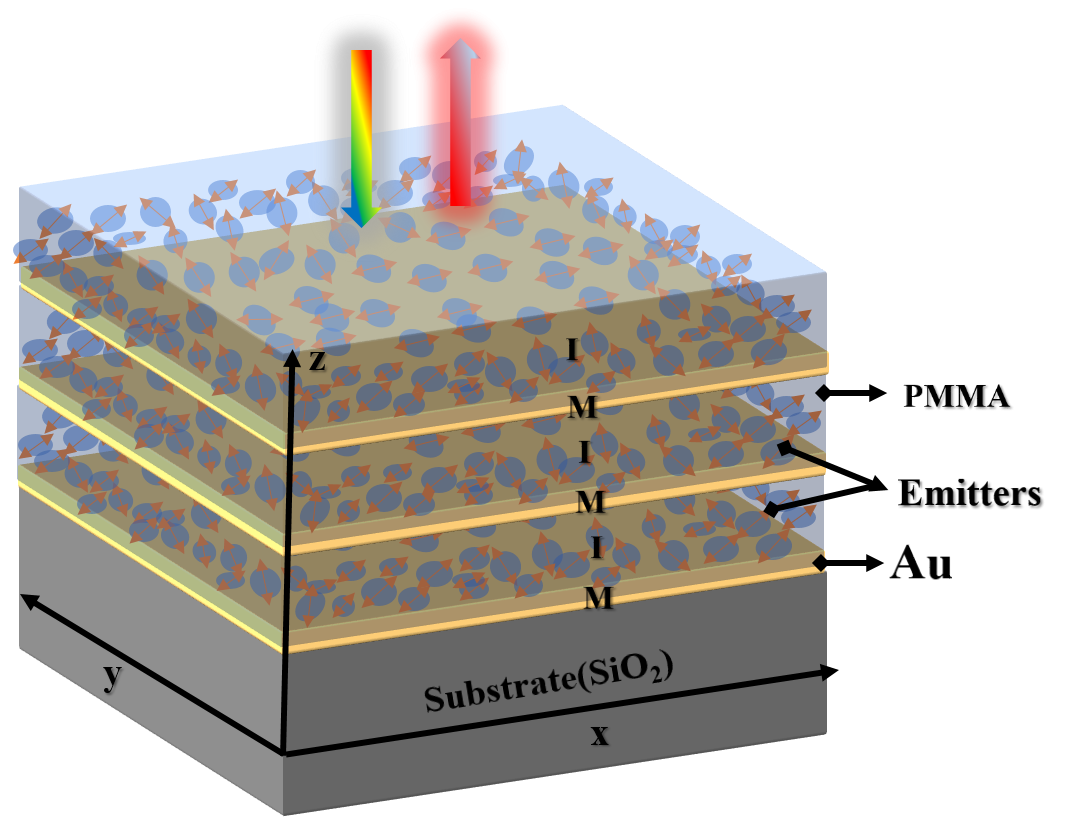
Our work on "Mechanism of emitters coupled with a polymer-based Hyperbolic Metamaterial" is published in Optics Express

We study a polymer-based hyperbolic metamaterial (HMM) structure composed of three Au-polymer bilayers with a hyperbolic dispersion relation. Using an effective refractive index retrieval algorithm, we obtain the effective permittivity of the experimentally fabricated polymer-based structure. In particular, the unique polymer-based HMM shows the existence of high-k modes that propagate in the metal-dielectric multilayered structure due to the excitation of bulk plasmon-polaritonic modes. Moreover, we compare the experimental luminescence and fluorescence lifetime results of the multilayered Au and a dye-doped polymer (PMMA) to investigate the dynamics of three different emitters, each incorporated within the unique polymer-based HMM structure. With emitters closer to the epsilon-near-zero region of the HMM, we observed a relatively high shortening of the average lifetime as compared to other emitters either close or far from the epsilon-near-zero region. This served as evidence of coupling between the emitters and the HMM as well as confirmed the increase in the non-radiative recombination rate of the different emitters. We also show that the metallic losses of a passive polymer-based HMM can be greatly compensated by a gain material with an emission wavelength close to the epsilon-near-zero region of the HMM. These results demonstrate the unique potential of an active polymer-based hyperbolic metamaterial in loss compensation, quantum applications, and sub-wavelength imaging techniques.
